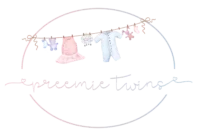Disclosure: This post may contain affiliate links, meaning we get a commission if you decide to make a purchase through our links, at no cost to you. Please read our disclosure for more info.

Children’s allergic reaction to milk is caused when certain proteins found in milk are rejected by the body’s immune system. If the immune system cannot recognize the milk proteins then they are treated as foreign objects and a hypersensitive reaction ensues. The immune system is supposed to identify milk proteins as harmless, but the false alarm will cause it to treat these proteins like it would a virus or dangerous chemical. When the immune system discharges granules through specialized cells, these granules release a toxin in an attempt to attack the milk protein. These toxins cause children’s sensitive reaction to milk. People tend to confuse milk allergies with lactose intolerance. The two may have similar symptoms but they are different. Milk allergies are as a result of the immune system rejecting milk proteins while lactose intolerance is caused by the lack of the lactase enzyme which breaks down lactose.
Cow’s milk carries plenty of allergens that cause infants to have an allergic reaction to milk. The proteins casein and whey are the main culprits. When milk curdles, there is the solid part and this is called casein and the watery part is called whey.
If you look at cheese, the harder it is the more casein it contains. This protein forms more than 80 percent of the protein found in milk.
Children’s allergic response to milk does not usually last a long time. Two to five percent of children develop milk allergies. Out of this lot, 60 percent will stop having an allergic reaction to milk by the age of four and another twenty percent will lose this allergy between ages four and six. It does not mean that you cannot develop these allergies in adulthood even if you have never developed it as a child. Children’s allergic reactions to milk can have the possibility to morph over time. If initially it manifested as diarrhea or vomiting, over time it could change to hives or itchy rashes.
Children’s allergic symptoms to milk can be placed in three categories:
- Skin reactions – These may manifest as an itchy rash, hives or eczema. It is also possible for your tongue and lips to swell. The child may also develop dark circles under the eyes.
- Gastric reactions – These may manifest first as stomach cramps and then develop to a runny and violent diarrhea. The symptoms can also be mild such a having a bloated feeling and an excessive passing of gas.
- Respiratory reactions – These may manifest as having a runny nose and a lot of sneezing. The child may also wheeze, cough or be short of breath. There is also the presence of itchy and watery eyes.
The symptoms displayed by children affected by milk may not only be brought about by milk. Any substances containing these proteins will also cause the same reactions. There are milk substitutes that you can give to children experiencing these reactions. They will get the same benefits as those drinking milk but without having to encounter any allergic problems.
About the Author: This is an article contributed by Haliyma Barrow, a freelance article writer based in New York. Barrow loves to write articles about child health issues and baby care tips such as stainless steel baby bottles.
